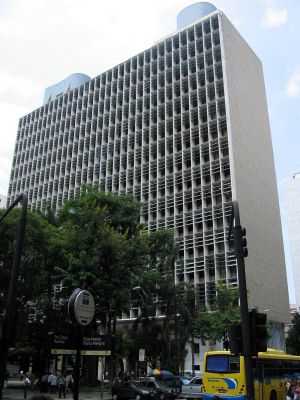Brise soleil

Brise soleil, sometimes brise-soleil (French pronunciation: [bʁiːz sɔlɛj], plural, "brise-soleil" (invariable), from French, "sun breaker"), in architecture refers to a variety of permanent sun-shading structures, ranging from the simple patterned concrete walls popularized by Le Corbusier in the Palace of Assembly to the elaborate wing-like mechanism devised by Santiago Calatrava for the Milwaukee Art Museum or the mechanical, pattern-creating devices of the Institut du Monde Arabe by Jean Nouvel.
In the typical form, a horizontal projection extends from the sunside facade of a building. This is most commonly used to prevent facades with a large amount of glass from overheating during the summer. Often louvers are incorporated into the shade to prevent the high-angle summer sun falling on the facade, but also to allow the low-angle winter sun to provide some passive solar heating.
Gallery
-
.jpg)
I. The movable Burke brise soleil on the Quadracci Pavilion of the Milwaukee Art Museum closes at sunset
-
.jpg)
II.
-
.jpg)
III.
-
time lapse of Milwaukee Art Museum's moving brise soleil from multiple angles
-

Side view of the brise soleil on the Quadracci Pavilion
-

Concrete brise soleil
-
Detail of north facade of Gustavo Capanema Palace
-

The Carpenter Center for the Visual Arts at night
-

Unité d'Habitation in Berlin
-
Geosciences Institute of Unicamp (Campinas, Brazil)
-

Islamic patterning on Burj Qatar, Doha, designed by Jean Nouvel
See also
External links
| Wikimedia Commons has media related to Brise soleils. |
- Brise soleil at the Milwaukee Art Museum
- British-Yemini Society Influence of climate on window design




